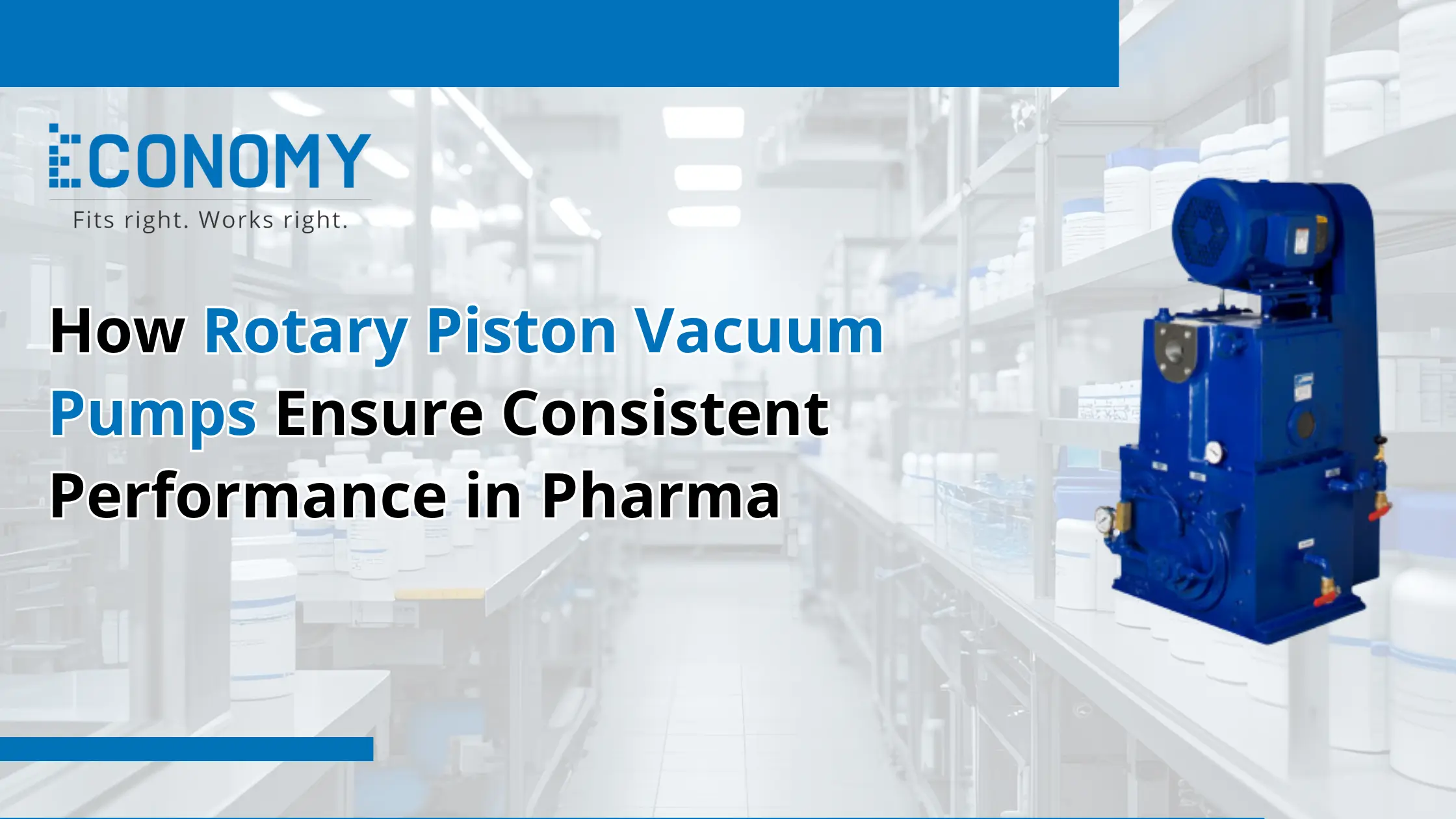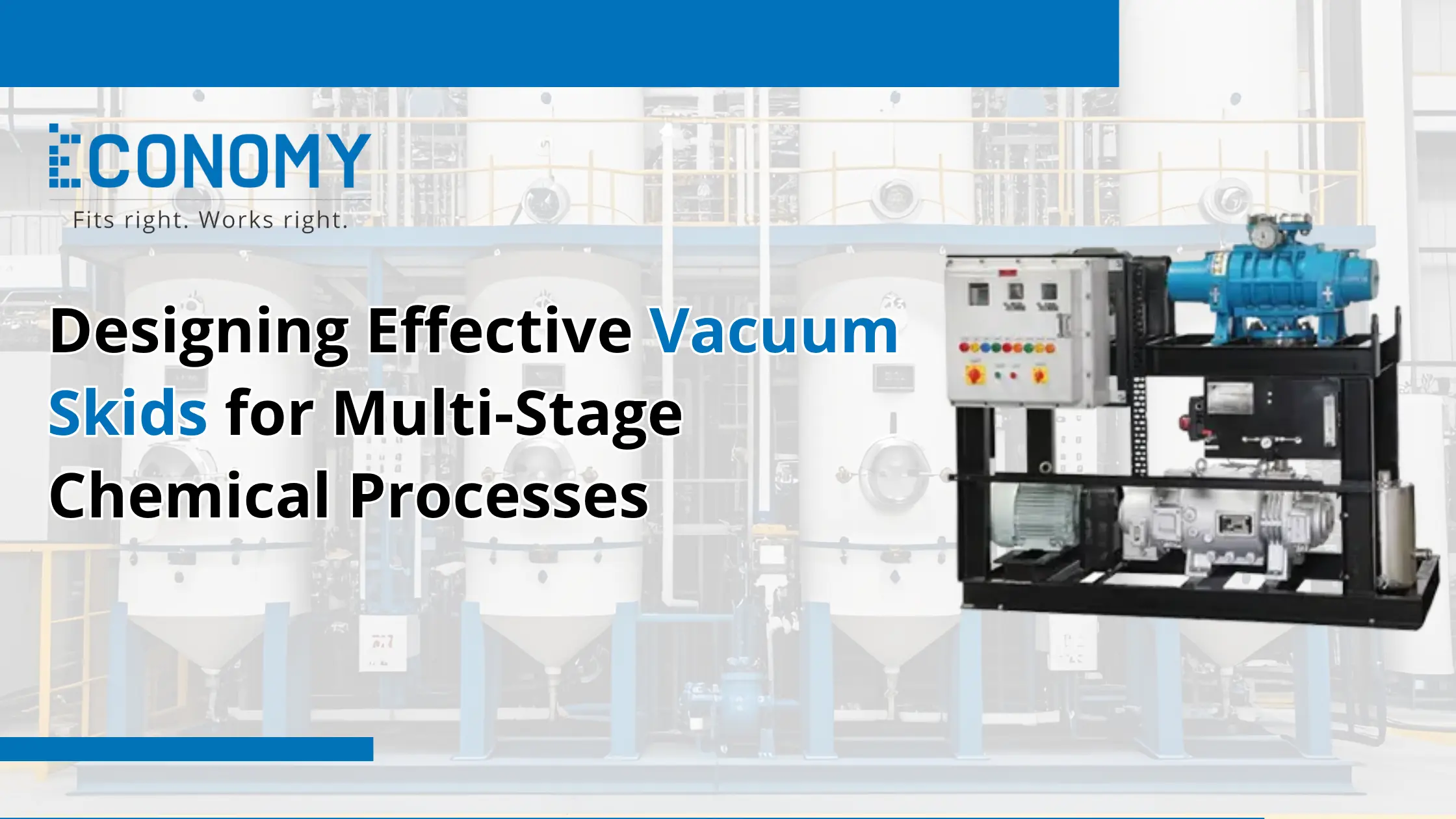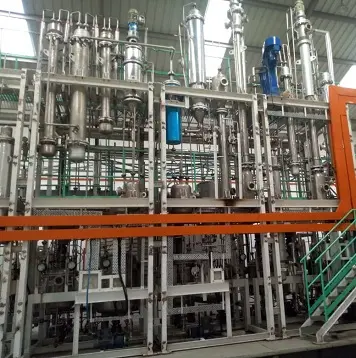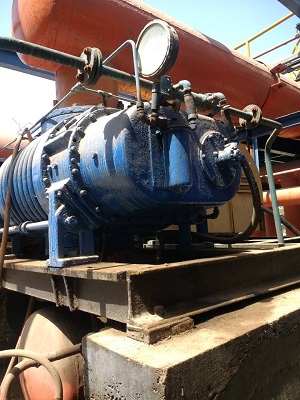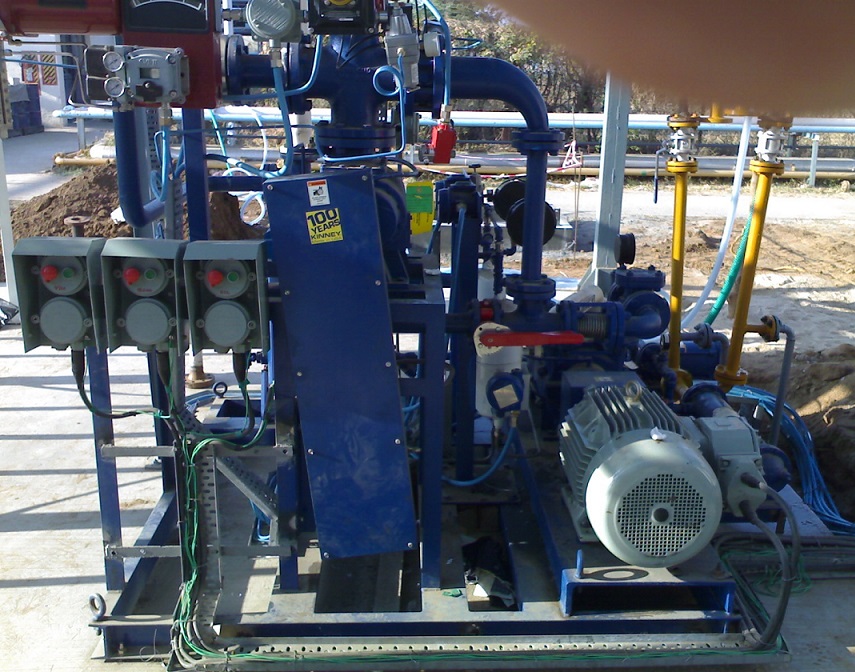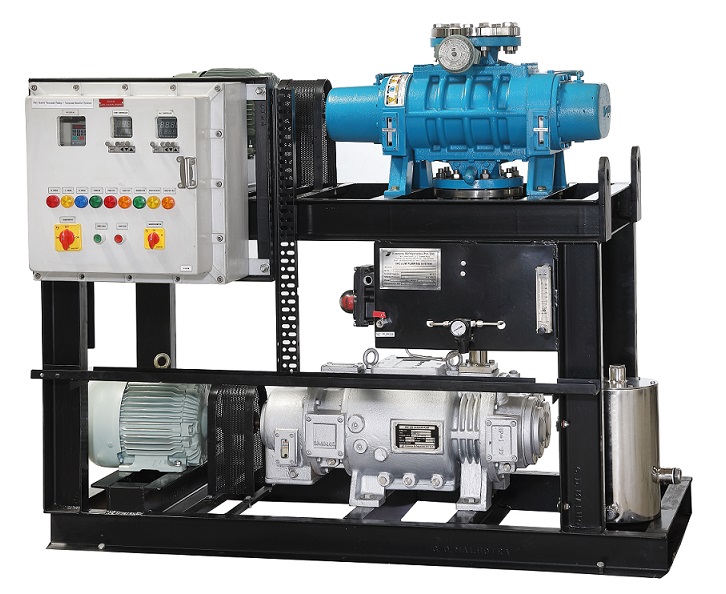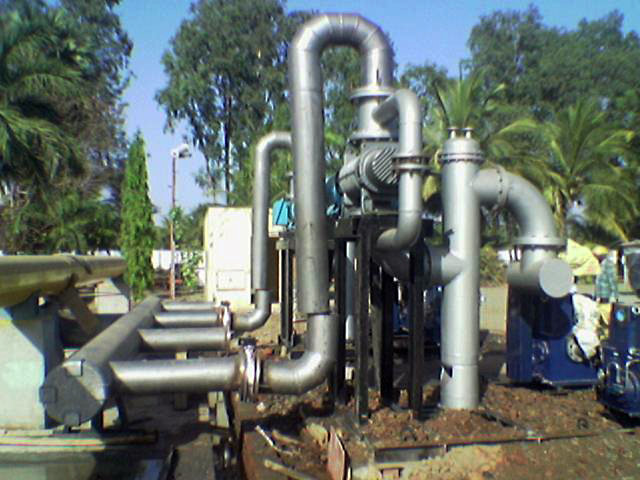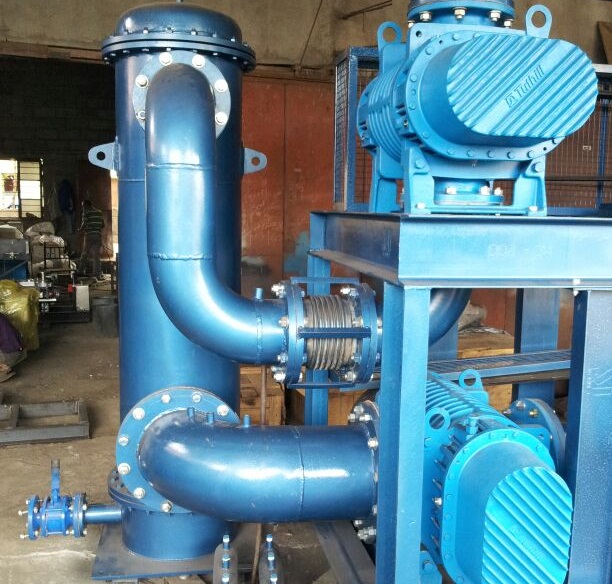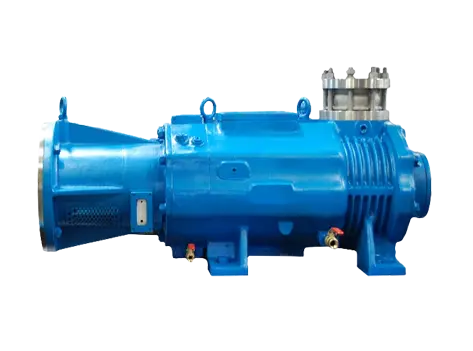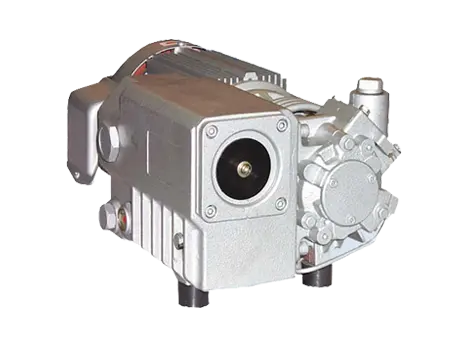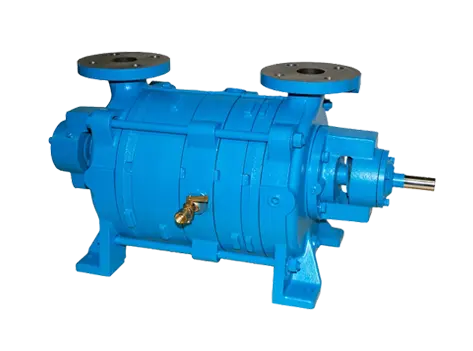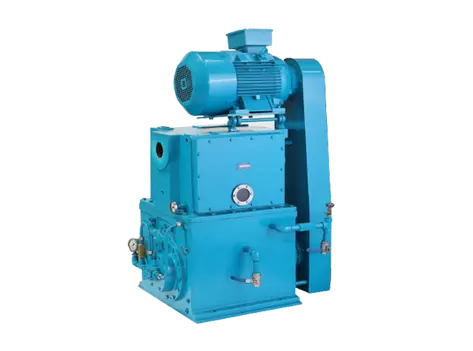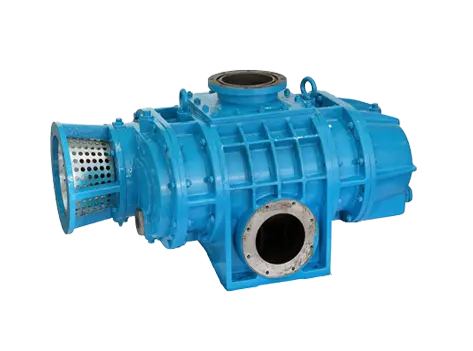
Dry Screw Vacuum Pumps vs. Liquid Ring Pumps: Which One Is More Efficient?
You should compare dry screw vs liquid ring vacuum pumps before choosing one for your facility based on the following knowledge.
Vacuum pumps help move, process, or clean materials by removing air or gas, which is crucial in chemical plants, food production, pharmaceuticals, and other industrial settings.
Importance of making the right choice
Choosing an incorrect vacuum pump may result in undesired output due to higher downtime, consuming more energy. A good match can save thousands and keep systems running smoothly.
Dry Screw Pumps – What You Should Know
-
Working: Two interlocking screws rotate in opposite directions, trapping gas and pushing it through the chamber—no oil or water is used inside the compression space.
-
Strengths: Dry screw vacuum pump benefits include clean operation, no contamination risk, lower maintenance, and suitable for handling harsh or reactive gases. They're ideal when you need purity and don’t want fluid interference.
-
Weaknesses: Not great with high moisture or particles. Repairs can be expensive if screws get damaged, and their initial cost tends to be more compared to other pumps.
-
Usage: They work well in controlled environments where clean, oil-free vacuum performance is critical to quality, such as electronics, medicine, and other dry processes.
Comparison of Dry Screw Vs. Liquid Ring Vacuum Pumps
Power draw and energy behavior over time
Dry screw pumps need less power in dry processes. Liquid ring models, however, may draw more due to continuous fluid circulation and heat loss.
Pressure consistency and vacuum depth
Dry screw systems maintain stable vacuum levels over time. Liquid ring pumps perform well but may fluctuate slightly depending on seal fluid temperature or process changes.
Maintenance routines and cost of operation
Liquid ring units need regular fluid checks, replacements, and possible corrosion management. Dry screws need less frequent service but cost more when mechanical parts wear out.
Dealing with moisture, process fluids, or polluted environments
Liquid ring models can endure dirty gas and moisture better. Dry screws struggle with condensation, particulates, or sticky vapors unless systems are pretreated or filtered effectively.
Impact on the environment in waste handling and sustainability
Dry screw pumps don’t use sealing liquids, reducing waste disposal needs. Liquid ring models need water management and chemical separation, which adds to environmental handling challenges.
Which is More Efficient in Practice
Energy use in different setups: A dry screw vacuum pump usually consumes less power in clean processes. Liquid ring pumps draw more in wet or vapor-heavy environments consistently.
Current and long-term cost comparisons: Liquid ring pumps cost less upfront. However, dry screw models offer better long-term savings if energy use and downtime are critical factors.
Picking the pump that matches your process: Choose the best vacuum pump for industrial use based on your decision on process type, gas load, contaminants, and space. The right fit reduces waste, energy use, and unplanned maintenance events.
Which Industries Use These Pumps and Why
Chemical production and labs
Dry screw pumps handle aggressive gases safely without contamination. Labs and chemical plants rely on them for clean, stable vacuum in sensitive or reactive environments.
Food and drink manufacturing
Since processes here are typically moisture-based, liquid ring pumps are commonly used. These machines are more efficient in handling sticky and moist products and food materials, ensuring hygiene during production and packaging.
Oil and petrochemical sectors
Heat, gas, and fluids need strong systems. Both pump types are used, but liquid rings dominate where vapor loads and corrosion risks are higher.
Packaging, drying, and general manufacturing work
Dry screw pumps suit dry, precise jobs. Liquid ring types fit bulk handling. Many factories use both depending on product, process phase, and throughput goals.
Choosing a Pump That Fits Your Operation
What to ask before choosing the right vacuum pump: Think about gas type, process moisture, energy limits, available space, noise sensitivity, and whether your team can manage complex maintenance routines easily.
Trade-offs between cost, upkeep, and performance: Lower initial cost might lead to higher upkeep. Dry screws offer cleaner performance but come with steeper repairs. Balance short-term savings against total lifecycle costs.
The payoff of getting the decision right the first time: A well-matched pump reduces downtime, boosts process reliability, cuts waste, and saves on energy—all adding up to fewer headaches and more substantial operational margins long-term.
Get in touch today for expert advice and tailored recommendations that match your industry needs.
FAQs
1. Which one of these pump types is usually more energy-friendly?
That depends. Comparing vacuum pump technologies, dry screw pumps tend to use less power in dry environments, but if your setup deals with moisture or vapors, liquid ring models might be more energy-efficient vacuum pumps.
2. Are dry screw models safe for chemical processing?
They often are—especially when handling gases or vapors that shouldn't mix with fluids. They're also great if product purity is a concern.
3. Is the maintenance requirement for liquid ring vacuum pumps more than that of the dry variants?
Yes, it is. This is because a liquid ring vacuum pump typically comprises sealing liquid that needs proper monitoring for contamination and regular changes. In comparison, despite the complexities, dry screw pumps usually have lower maintenance requirements.
4. Where are liquid ring pumps used extensively?
Due to the liquid ring pump efficiency, they're popular in places like pulp and paper mills, power stations, and food plants—anywhere vapor loads or wet gases are part of the job.
5. What’s the most innovative way to choose between them?
Look at your process. Is it dry, clean, and sensitive to contamination? A dry screw pump may be best. The liquid ring might be a better match if you're handling dirty or moist gases.
Conclusion
In conclusion, choosing the best pump after comparing dry screw vs. liquid ring vacuum pumps depends on your process. Understand your needs, weigh long-term value, and select the system that brings efficiency, reliability, and fewer headaches each day.
